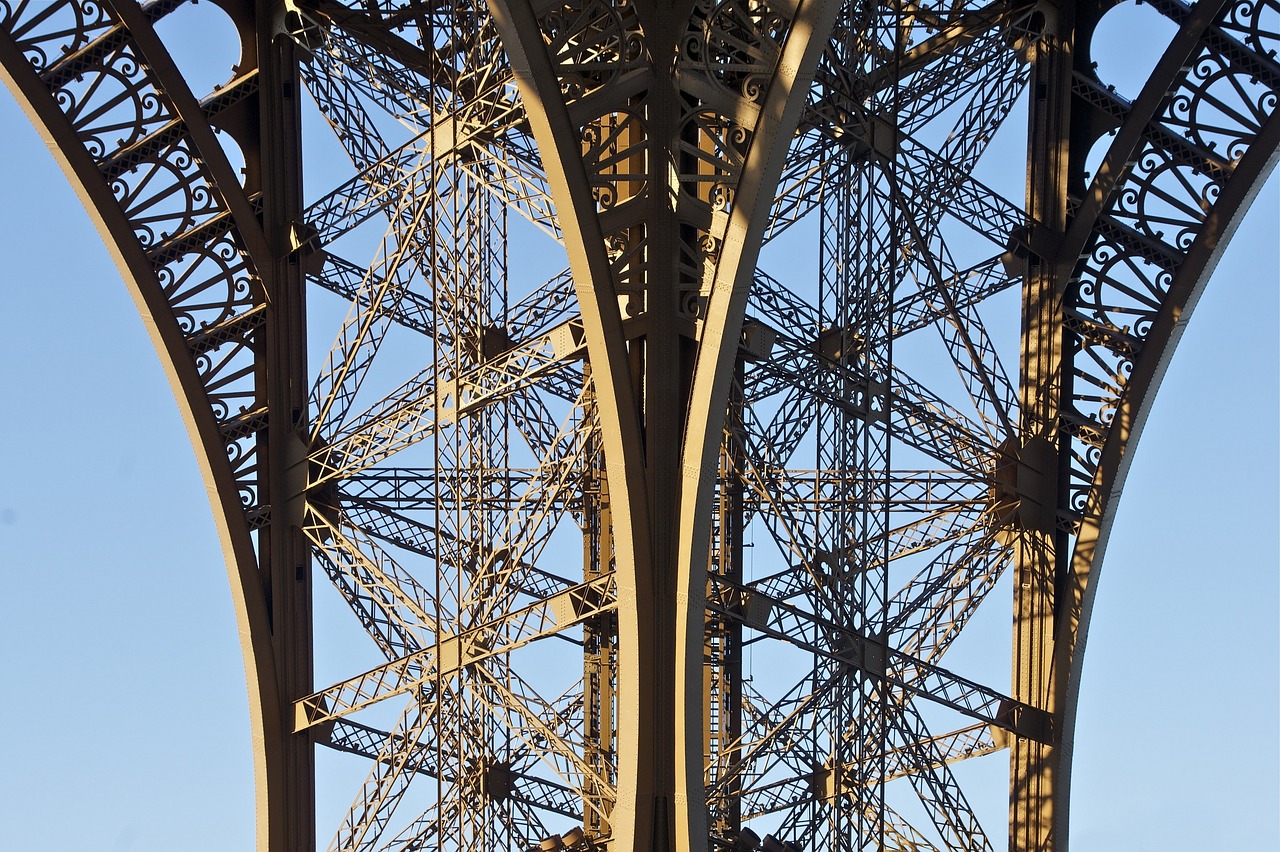Girders in general
Girders play a significant role in mechanical engineering, particularly in structural design and construction.
Carefully look at the picture and try to figure out which part of a famous European monument you see in the image? The monument is a structure made of steel girders. Hopefully, you recognized it as the Eiffel Tower. Photo from https://pixabay.com/images/search/girder/.

Read the text and learn the importance of girders in mechanical engineering.
Girders play a significant role in mechanical engineering, particularly in structural design and construction. Here are several reasons why girders are important:
- Structural Support: Girders provide essential structural support in buildings, bridges, and various other types of infrastructure. They bear the weight of floors, roofs, and other loads, distributing them safely to the supporting columns or piers.
- Load Distribution: Girders help distribute loads from heavy equipment, machinery, or vehicles across large spans. By spreading the load over a wider area, girders minimize the risk of structural failure and ensure the stability and safety of the structure.
- Flexibility in Design: Girders offer flexibility in structural design by allowing engineers to span long distances without the need for intermediate supports. This flexibility enables the creation of open, spacious interior spaces in buildings and bridges, enhancing functionality and aesthetics.
- Variety of Materials: Girders can be constructed from various materials, including steel, concrete, timber, and composite materials. Each material has its unique properties and advantages, allowing engineers to choose the most suitable option based on factors such as cost, strength, durability, and environmental considerations.
- Integration with Other Systems: Girders can be integrated with other structural systems, such as beams, columns, and trusses, to create complex and efficient structural frameworks. This integration allows engineers to optimize the design for specific load conditions, space constraints, and architectural requirements.
- Resistance to Environmental Factors: Girders are designed to withstand various environmental factors, including wind, seismic activity, temperature fluctuations, and corrosive agents. Proper design and material selection ensure that girders maintain their structural integrity and performance over time, even in harsh environmental conditions.
- Maintenance and Durability: Girders are designed to have long service lives with minimal maintenance requirements. Properly maintained girders can withstand decades of use, reducing the need for costly repairs or replacements and ensuring the longevity of the overall structure.
Overall, girders are essential components in mechanical engineering, providing structural support, load distribution, flexibility in design, and resilience to environmental factors. Their importance extends across various industries, including construction, transportation, manufacturing, and infrastructure development.
Girders in general.
With this presentation you will learn how to calculate the girder using graphical and analytical methods.
Spin the wheel and answer the questions.
Resource information